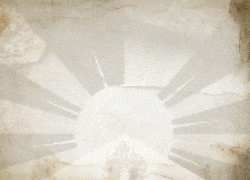By SALMAN HAIDAR
A FEW days ago, there was a news item quoting the Dalai Lama as having said that he wished to be the last of his line, and that he would like the position itself to be abolished after his death. This is a significant reiteration of something the Dalai Lama has been talking about for quite some time. His recent utterances on the subject seem ever more emphatic. No drastic decisions are anywhere in sight. But should something of this nature actually happen and the Dalai Lama’s office ceases to exist, it would have far-reaching implications in Tibet and elsewhere.
The Dalai Lama uniquely combines spiritual and temporal pre-eminence in a single authority. Parallels are to be found in history, not in the institutions of today. The Dalai Lama is so closely identified with the land, people and distinctive culture of Tibet that one may not always recall that his is not the most ancient office in that land. The Gelukpa order (identified by its yellow headgear) that the Dalai Lama heads, with the Panchen Lama as a virtual co-equal, came into existence only around the 15th century, several hundred years after the advent of Buddhism in Tibet. Its reformist message swept through the realm, challenging and eventually supplanting earlier religious orders, but, typically, not trying to extinguish them. A complicated system of mutual accommodation and recognition between the various orders and their spiritual leaders came into being, which remains extant even today, though the Yellow order has long ranked far ahead of the others in authority and prestige.
Some of the towering personalities who have held the office in the past, most significantly the 13th Dalai Lama of the last century, predecessor of the present incumbent, have helped ensure that this office above all others should come to embody the spirit and the aspirations of Tibet.
Tibet’s entirely singular method of choosing successors to the high offices through identification of the new incumbent as the reincarnation of the previous one has worked for centuries to the satisfaction of the local people. But it has never been trouble-free, for often enough there have been rival claimants and vigorous disputes among their supporters.
This is something that continues to the present day. Not so long ago, representatives of the newly identified Panchen Lama in Tibet, who had the approval of the Chinese authorities, came to meet the Dalai Lama and succeeded in satisfying him of the authenticity of the newly identified reincarnate. But controversy arose, for political as much as other reasons. More dramatic was the case of the new Karmapa, bearer of one of the most ancient and honoured titles, who escaped from Tibet and made his way to Dharamsala, to receive the acknowledgement and welcome of the Dalai Lama.
Nevertheless, the cause of a rival candidate continues to be pursued insistently by other high lamas from the Tibetan hierarchy. Such controversies have been a feature of the Tibetan past and they underline the inherent problems in a process that looks increasingly anachronistic today.
Moreover, it is in the nature of this process that whoever is chosen as the new incumbent of the Dalai Lama’s office, or any other high office, will be little more than an infant at the time of his anointing. He will therefore be incapable of handling the responsibilities of the office for several years until he matures. During this period, in the case of the Dalai Lama’s office, authority has been vested in a regency council dominated by the hereditary nobility. This has led to charges of feudalism, to which, judging from his public statements, the Dalai Lama is quite sensitive.
Nevertheless, if now the Dalai Lama says he would like to lay down his office when he returns to Tibet, it is not the result of pressures from within his community or from outside. Indeed, the pressures are more likely to work in reverse, and there could well be strong resistance to any such move by him. But the Dalai Lama knows that the temper of the age has shifted. His office may provide a rallying point against Chinese domination and the threat to Tibet’s culture and religion, but it is no pathway to the future. The unwavering obedience it demands and the social structure on which it rests must give way to something new.
In a recent message on the anniversary of the 1959 uprising in Tibet, the Dalai Lama has reiterated his belief that Tibet must follow a democratic and secular system of governance. He has also repeated that on his return to Tibet, his office would cease to exist, and his government-in exile (to which, incidentally, India attaches no official status) be dissolved.
Whether the Dalai Lama will ever be able to carry out his intentions cannot be said. Yet he has shown rare wisdom in recognising the obsolescence of the high office he holds. The Dalai Lama has also given expression to his encouragement at the ‘friendly and meaningful’ talks held by his representatives during their recent visit to China and Tibet. He has repeated his call for a ‘Middle Way’, and has emphasised his continued commitment to dialogue. For all that, there is little sign of any meeting of minds. In the continued test of wills with Beijing, the eminence and international recognition of the Dalai Lama is Tibet’s greatest asset. Tibet must hope that he is able to guide events towards a conclusion.
(The author is former Foreign Secretary, government of India.)









